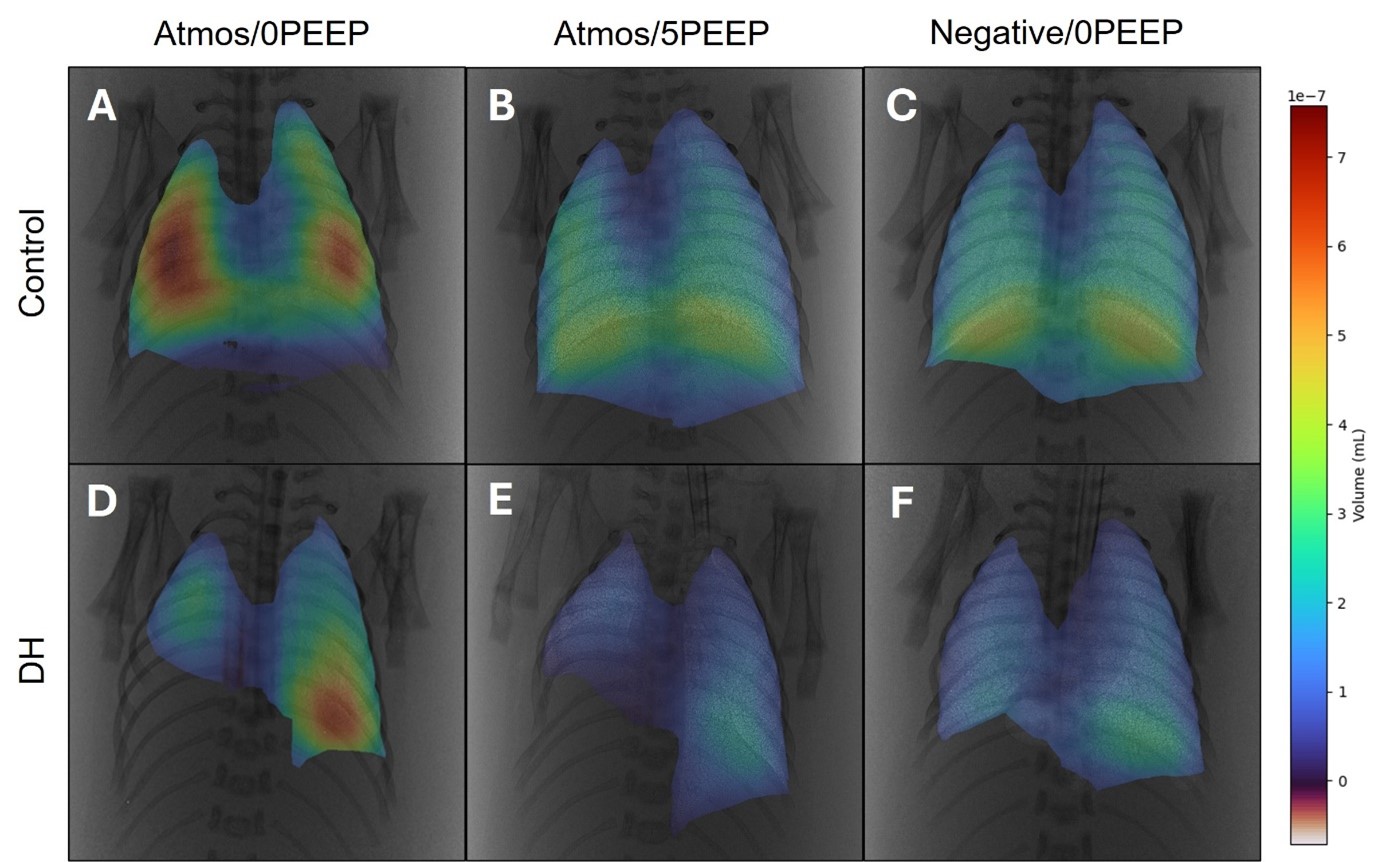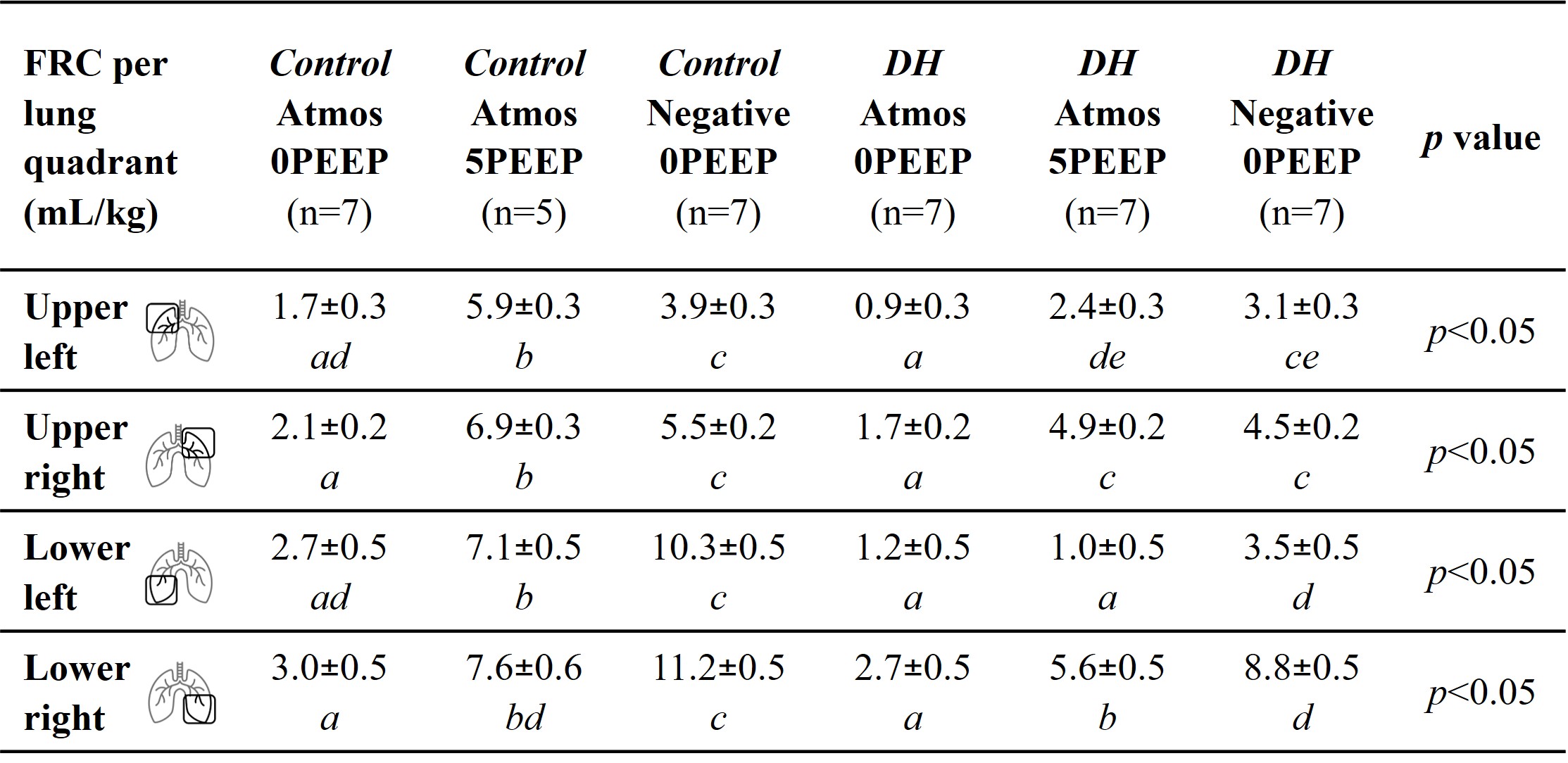Neonatal/Infant Resuscitation 1
Session: Neonatal/Infant Resuscitation 1
292 - An External Negative Pressure Alters the Regional Distribution of Ventilation in Near-Term Rabbit Kittens With a Diaphragmatic Hernia.
Friday, April 25, 2025
5:30pm - 7:45pm HST
Publication Number: 292.3757
Paige J. Riddington, Monash University, Clayton, Victoria, Australia; Philip DeKoninck, Erasmus MC, Rotterdam, Zuid-Holland, Netherlands; Indya M. Davies, Hudson Institute of Medical Research, Clayton, Victoria, Australia; Megan I. Wallace, Monash University, Clayton, Victoria, Australia; Dominic Jurkschat, Monash University, Clayton, Victoria, Australia; Janneke Dekker, Leiden University Medical Center, Leiden, Zuid-Holland, Netherlands; Arjan te Pas, Division of Neonatology, LUMC, Leiden, Zuid-Holland, Netherlands; Marcus Kitchen, Monash University, Melbourne, Victoria, Australia; Stuart B. Hooper, Monash University, Black Rock, Victoria, Australia; Kelly J. Crossley, The Ritchie Centre, Clayton, Victoria, Australia

Paige J. Riddington, BSc(Hons) (she/her/hers)
PhD Student
Monash University
Clayton, Victoria, Australia
Presenting Author(s)
Background: As regional lung growth and compliance is not uniform in infants with congenital diaphragmatic hernia (CDH) the distribution of ventilation is also not uniform, particularly during lung aeration. This exposes CDH infants to a high risk of ventilator-induced lung injury as high peak inflation pressures (PIPs) are required to aerate and ventilate the small, poorly compliant lung regions, which simultaneously causes over-distension and injury to the larger, more compliant regions. As a small external negative pressure can improve lung aeration with lower PIPs in rabbit kittens with a diaphragmatic hernia (DH, Abstract ID: 1976515), we hypothesised that an external negative pressure also improves the regional distribution of ventilation.
Objective: To investigate the regional distribution of ventilation in DH rabbit kittens during lung aeration.
Design/Methods: A left-sided DH was surgically induced in 2-3 rabbit fetuses per doe (n=18 does) at 24 days gestational age (GA), littermates acted as controls. Kittens were delivered via caesarean section (30d GA), intubated and placed in a water filled (39°C) plethysmograph. The external pressure was adjusted to -6 (negative) or 0 (atmospheric) cmH2O. Kittens were ventilated (7min) to achieve a tidal volume of 8mL/kg in control and 4mL/kg in DH kittens. Kittens in negative pressure were ventilated without a positive end-expiratory pressure (PEEP; Negative/0PEEP) while kittens in an atmospheric (Atmos) pressure were ventilated with or without PEEP (Atmos/5PEEP and Atmos/0PEEP). Lung aeration (functional residual capacity; FRC) and tidal ventilation was measured with phase contrast x-ray imaging. Data was analysed with a repeated measures linear mixed model with Sidak corrected comparisons (sample size calculated on G*Power) and presented as mean±SEM, significance p< 0.05.
Results: In control and DH kittens, tidal ventilation in Atmos/0PEEP was restricted to aerated lung regions (Figure 1A and D). Atmos/5PEEP and Negative/0PEEP evenly distributed the tidal volume across the whole lung of control kittens (Figure 1B and C) and the contralateral lung of DH kittens (Figure 1E and F). Atmos/5PEEP increased FRC levels in the upper left and right lung quadrants of control kittens but not DH kittens. In contrast, Negative/0PEEP increased FRC volumes in the lower left and right lung quadrants in control and DH kittens (Table 1).
Conclusion(s): In DH kittens, an external negative pressure was more effective at aerating lower lung regions while both PEEP and negative pressure effectively aerated upper lung regions.
Figure 1. Representative heat maps showing the regional distribution of air volume during tidal ventilation.
 Control (A-C) and diaphragmatic hernia (DH; D-F) rabbit kittens ventilated for 7 minutes in an external atmospheric (Atmos) pressure with/without a positive end-expiratory pressure (PEEP) or in an external negative pressure without PEEP. Images were collected at 7 minutes after ventilation onset.
Control (A-C) and diaphragmatic hernia (DH; D-F) rabbit kittens ventilated for 7 minutes in an external atmospheric (Atmos) pressure with/without a positive end-expiratory pressure (PEEP) or in an external negative pressure without PEEP. Images were collected at 7 minutes after ventilation onset.Table 1. Functional Residual Capacity (FRC) per lung quadrant in in near-term control and diaphragmatic hernia (DH) rabbit kittens.
 FRC (mL/kg) in the upper left, upper right, lower left and lower right lung quadrants at 7 minutes after ventilation in an external atmospheric (Atmos) pressure with/without a positive end-expiratory pressure (PEEP) or in an external negative pressure without PEEP. Data expressed as mean±SEM. Data analysed using a repeated measures linear mixed model with Sidak corrected comparisons. Groups that do not share a common letter are significantly different from each other (p < 0.05).
FRC (mL/kg) in the upper left, upper right, lower left and lower right lung quadrants at 7 minutes after ventilation in an external atmospheric (Atmos) pressure with/without a positive end-expiratory pressure (PEEP) or in an external negative pressure without PEEP. Data expressed as mean±SEM. Data analysed using a repeated measures linear mixed model with Sidak corrected comparisons. Groups that do not share a common letter are significantly different from each other (p < 0.05). 
